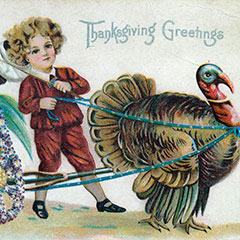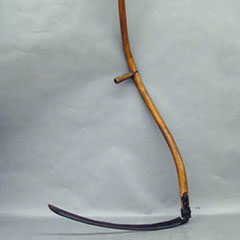Thanksgiving
Thanksgiving is celebrated on the second Monday of October in Canada, and on the fourth Thursday of November in the United States. It originates from ancient harvest festivals, where people celebrated the end of a season of farm work. Harvest festivals took place on the last day of reaping or when the wheat was garnered. They began with a religious service, followed by games and dancing, and ended with a meal.
In Québec, harvest celebrations are better known by the name “la grosse gerbe”, an expression which means “the big sheaf”. The ultimate symbol of harvesting, abundance, and prosperity, the wheat sheaf also has religious meaning: that of a sacred force that protects against illnesses. A cluster of sheaves also evokes the strength resulting from joining together.
In his book Fêtes et corvées (meaning celebrations and chores), Pamphile Lemay mentions that the big sheaf celebrations include songs and dances. He says: “We put the sheaf upright, tying flowers to its head and ribbons to its straw skirt. Then, while holding hands, we briskly dance around it. We sing all the old popular songs, and fill the air with laughter, whispers, and shouts.”
Nowadays, this fall custom has lost some of its meaning because of the mechanization of farm work, and the fact that harvest time is spread out over a longer period.
Le reel des moissonneurs (The Harvesters Reel)
Download audio (2 minutes 50 seconds, 2.60 MB)
Reel played by a violin with piano accompaniment.
Performer: Joseph Allard, 1942
Source: BAnQ – Digital collection [sound recordings]





